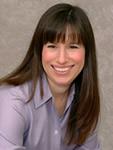I must say that of all the questions I have received, yours is the one I have been hoping for. I, as many others, have pet peeves and this question of minhag or minhagim (pl. customs) is one of my favorites.
Let us first look at a few major Rabbinic sources pertaining to the place of minhag in Jewish life and observance. The concept of minhag is related to Torah observance but is not necessarily a direct commandment itself, per se. Often it concerns more how to observe a particular mitzvah.
The major book of Jewish Law is the Shulhan Arukh from the 16th century. It is well known that the author Rabbi Joseph Karo (Israel, d. 1575) known as the Mehaber or Maran, presented halakhah in accordance with the common religious practice of the Jews originating in the Iberian peninsula, known as Sepharadim.
This binding presentation was in many ways at variance with the common religious practice of the Jews of Ashkenaz especially those of the lands associated with Poland. Rabbi Moses Isserles (Poland, d. 1572) known as the Rama, whose original intent seemed to be to write his own type Shulhan Arukh, wrote glosses or hagahot to Rabbi Karo’s work. This reflected the differences in custom or minhag of much of Ashkenazic Jewry.
This being said, this presentation is far too simplified since the reality is that there are differences in religious practice from country to country, community to community, synagogue to synagogue and family to family. All of these traditions and practices are considered sacrosanct and not to be violated.
A major problem that is found in today’s world, is the reality of disruption, dislocation, the break up of communities and the breakdown of families. Numerous reasons can be given for this, especially migration, the Holocaust, expulsion of Jews from their native lands and assimilation.
The Shulhan Arukh presents in the section dedicated to that which is prohibited and that which is permitted, “There is a major principle that the custom of our parents—ancestors (minhag avoteinu Torah hee) is Torah.” This means that the practices of our parents are definitive as far as far as our religious practice is concerned. (See Code of Jewish Law, Yo-reh Dei-ah, Section 376, Law 4, also Kitzur Shulhan Arukh, Section 199, Law 10)
The Babylonian Talmud states that it is forbidden for a person to make a change from the received custom. “One may never deviate from the accepted custom (l’olam al ye-sha-neh adam min ha-minhag.” (Tractate Baba Metziah 86b)
From the above, it would seem quite clear that whatever was is what will be forever. However, life is not quite so simple. There are hash-pa-ot (influences) surrounding us and a break down of authority. There is also a move to the right in many communities, where stringencies (hum-rot) are being set in place causing some Jews to feel put upon to conform or be ostracized.
Few communities remain unaffected by such forces. I consider myself blessed, having been Rabbinically trained by a great Sephardic hakham (sage) who always made clear that in accordance with the teachings of Maimonides(12th century, Egypt), that the path of moderation, the she-vil ha-zahav (golden mean) is the correct one.
According to your question, your concern is with a child or youngster who desires to practice stringencies in the mitzvot or even minhagim which are not in accordance with those of his or her family. There is no doubt that this is not to be countenanced by the Jewish tradition that they seemingly wish to respect.
It is necessary to do your best to understand the reason for the desire, but also gently, but with firmness to make certain that the youngster realizes that they must adhere to family custom.
There are many influences upon people, including Jewish outreach movements which almost invariably attempt to coax initiates to adopt their movement’s leader’s customs and not to investigate the initiate’s own past and adopt or readopt their ancestral observances. This approach is to be avoided wherever possible. No one is a tabula rasa (blank slate).
When it comes to issues of tz’niut (modesty) and kashrut (Jewish Dietary Laws) observances, our day has seen a move to the right, in the direction of hum-rah (stringency). Growing up as I did in a family where both of my parents were raised in strictly observant families from Europe, I have a first hand exposure to frumkeit (religiosity). Much of what is seen today with regard to modes of dress and grooming, as well as strictures in kosher eating and food preparations, or looking askance at other Jews, suspecting them of not being “frum” enough or kosher enough would be deemed improper.
It is nonetheless important that one understand, even a parent, that a particular family custom may be rooted in an incorrect tradition that is at variance with the rules set down in the Shulhan Arukh and the Rama. An example is standing or sitting for the recitation of Kiddush over the wine on Shabbat evening. There are a variety of practices pertaining to when to stand and at what point to drink while seated. All of this has a basis in local or family customs. But, I have seen those who will stand throughout and even drink while standing.
They believe, incorrectly, that standing is the correct observance. Looking into the codes, it is clear that drinking when at the Shabbat table is to be done in a sitting position.
If the family tradition turns out to be incorrect, one should turn to a competent, respected Rabbinic authority to decide what should be done to rectify the situation. There are even errant minhagim which have been termed by some authorities, minhagei she-toot (foolish customs).
In my own family, one exceptional relative termed himself a “Jewish orphan.” Not being raised “religiously,” in adulthood he strove to catch up and become “religious.” Not knowing where to turn, he started adopting someone else’s minhagim, not knowing the family traditions. This is understandable, until one has the opportunity to return to his or her own place of origin—your own family roots.
As you can see, the subject is far from simple. My advice is to follow family custom, preserving it as the precious heritage that it is.
Answered by: Rabbi Sanford Shudnow









